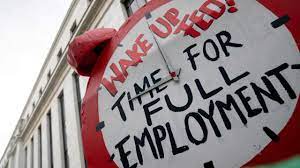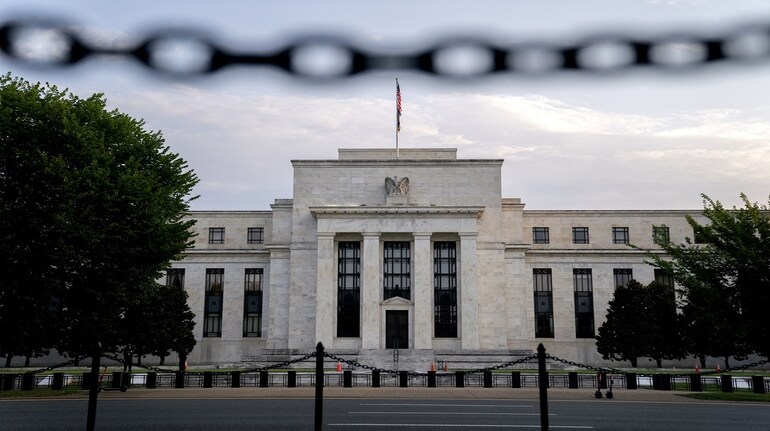Fed Officials Ask How to Better Understand Inflation After Surprises

After surprises, Fed officials inquire about ways to better understand inflation. After 18 months of rapid change, Federal Reserve officials—including board member Lisa Cook—are debating how to approach price increases.
A difficult question that is expected to plague the Federal Reserve throughout 2023 was addressed by officials at the start of the year: How should central bankers understand inflation after repeatedly misjudging it for the previous 18 months?
In a speech at the American Economic Association’s annual meeting in New Orleans, Lisa D. Cook, one of the Fed’s seven governors based in Washington, discussed how officials could improve their ability to forecast price increases in the future. At the conference, where economists spent time reflecting on why they misjudged inflation and how they could do a better job the next time, her voice joined a growing chorus.
Cook stated during her remarks that Fed officials must “continue to advance our main understanding of inflation” and “our ability to forecast risks,” and that central bankers should update their models to better account for unexpected shocks and to better predict when inflation may begin to accelerate.
Her remarks highlighted the difficulty facing monetary policymakers this year. In an effort to slow the economy and rein in inflation, officials have quickly raised rates. Now they must decide when to stop these actions as well as how long they should keep borrowing costs high enough to significantly curtail economic activity.
Making those decisions will be challenging. Although inflation is currently slowing down, it is difficult to predict when and how completely it will stop. The Fed wants to avoid pulling back too soon, but keeping rates high for an extended period of time would cost and cause more harm than necessary to the economy and labour market.
The fact that policymakers are making these choices while utilising data that is distorted by the pandemic’s long-term effects and while they still don’t know how the economy will function after it only adds to the difficulty.
Raphael Bostic, the president of the current Federal Reserve Bank of Atlanta, said during a panel discussion on Friday that “the pandemic has triggered mainly a lot of changes in terms of how our economy operates.” We’re in a lot of flux, so it’s difficult to predict exactly how things will change from week to week or month to month.

Understanding inflation is essential to answering the Fed’s complex policy dilemmas. But as recent events have shown, figuring out what initiates and sustains price increases is a challenging economic issue.
Since the start of the pandemic, Fed officials and economists in general have a terrible track record of forecasting inflation. Prices were expected to be “transitory” in 2021, when they first started to soar. When they persisted longer than anticipated, policymakers as well as numerous Wall Street and academic forecasters spent much of 2022 predicting that they would start to fade more quickly than they actually did.
Fed Officials have started to suggest that the central bank reevaluate its approach to looking at inflation in light of those errors.
Neel Kashkari, president of the Minneapolis Fed, wrote in an essay this week that “our models seem ill-equipped to handle a fundamentally different source of inflation.”
In the past, the Fed has identified two factors as the cause of long-term inflation: an overly tight labour market that is driving up wages and consumer and also business expectations for higher prices, which can become a self-fulfilling prophecy by making it simpler for businesses to charge higher prices.
However, the pandemic-inspired shifts in demand, constrained supply chains, and Russia’s conflict in Ukraine have all contributed to today’s inflation. While such shocks are typically expected to pass quickly, this one has persisted, and it was made worse first by the sharp increase in rents and more recently by the sharp increase in the cost of other services.
On the panel with Cook, economist David Romer from the University of California, Berkeley, stated, “We don’t understand inflation.”
Fed officials are currently betting that the rapid inflation will slow as supply chains straighten out and the 2021–2022 housing price boom starts to level off. Officials are concerned that although the current rapid wage growth was not the original cause of inflation, it may serve to support it given that the hot labour market is only now beginning to cool off.
Cook stated on Friday that “the pandemic has had a much more prolonged effect on the labour supply than many expected.” Traditional measures of labour market tightness, like the unemployment rate gap, “might not be capturing” the recent rise in inflation caused by rapid nominal wage growth.

The Fed can find some comfort in the slowing pay growth, which was visible in the jobs data released on Friday. “Recent data suggest that labor-compensation growth has also indeed started to decelerate also somewhat over the past year,” Cook noted in her remarks.
However, policymakers have indicated that they are still waiting for an even more pronounced slowdown in the economy before they are confident that the labour market will stabilise and inflation will fully subside.
According to Bostic, president of the Atlanta Fed, “the economy is moving in many ways that we will start to see that imbalance disappear.” But it will take time, he added.
Panelists warned that bringing down price increases could necessitate a much more severe, painful slowdown in the labour market, which continued to add jobs last month, in a discussion titled “Is High Inflation Here to Stay?”
Former Fed economist and current professor at the University of Texas at Austin Aysegul Sahin said, “I think high inflation is not here to stay, but it’s going to mainly linger unless we see a currently huge increase in the unemployment rate that mainly comes from broad-based job destruction.” “While what we are seeing in the labour market is consistent with a soft landing, it could very well be the start of the storm, and it could very well be that we are just not seeing that,” the author said.
Officials have also emphasised that caution is required because there is a lot of uncertainty.
While central bankers are slowing the rate of rate increases to give themselves more time to see how their policies are affecting the economy, they also want to avoid prematurely giving up on the fight against inflation.

Tom Barkin, president of the main Federal Reserve Bank of Richmond, referred to a period of time 50 years ago when price increases took off and stayed high for years, saying that experience “showed that if you back off on mainly inflation too soon, it comes back stronger.”
If you believe that supply chain improvements and our current actions are sufficient to quickly reduce inflation, Barkin continued, “then our more gradual rate path should limit the harm.”
Cook emphasised that she and her colleagues are diligently looking for data and models to help them better understand how the economy and inflation dynamics actually work.
Cook declared, “We don’t accept anything as a religion. We don’t just hear the suggestions and follow them blindly. We’re not a single entity, she continued.




